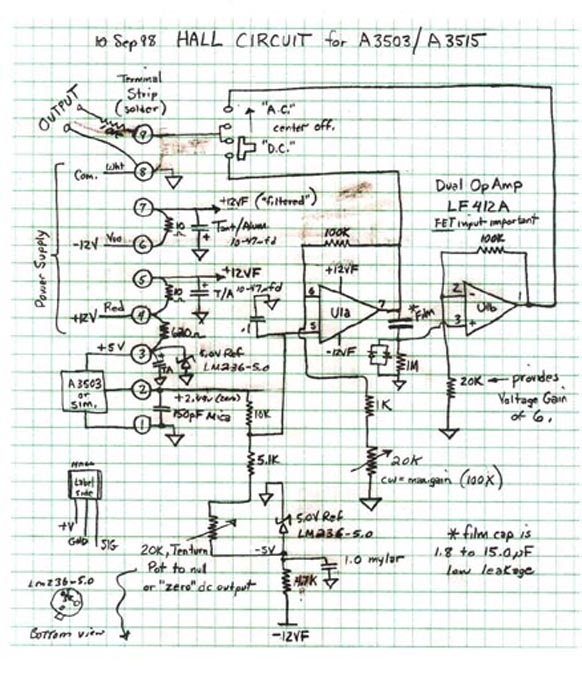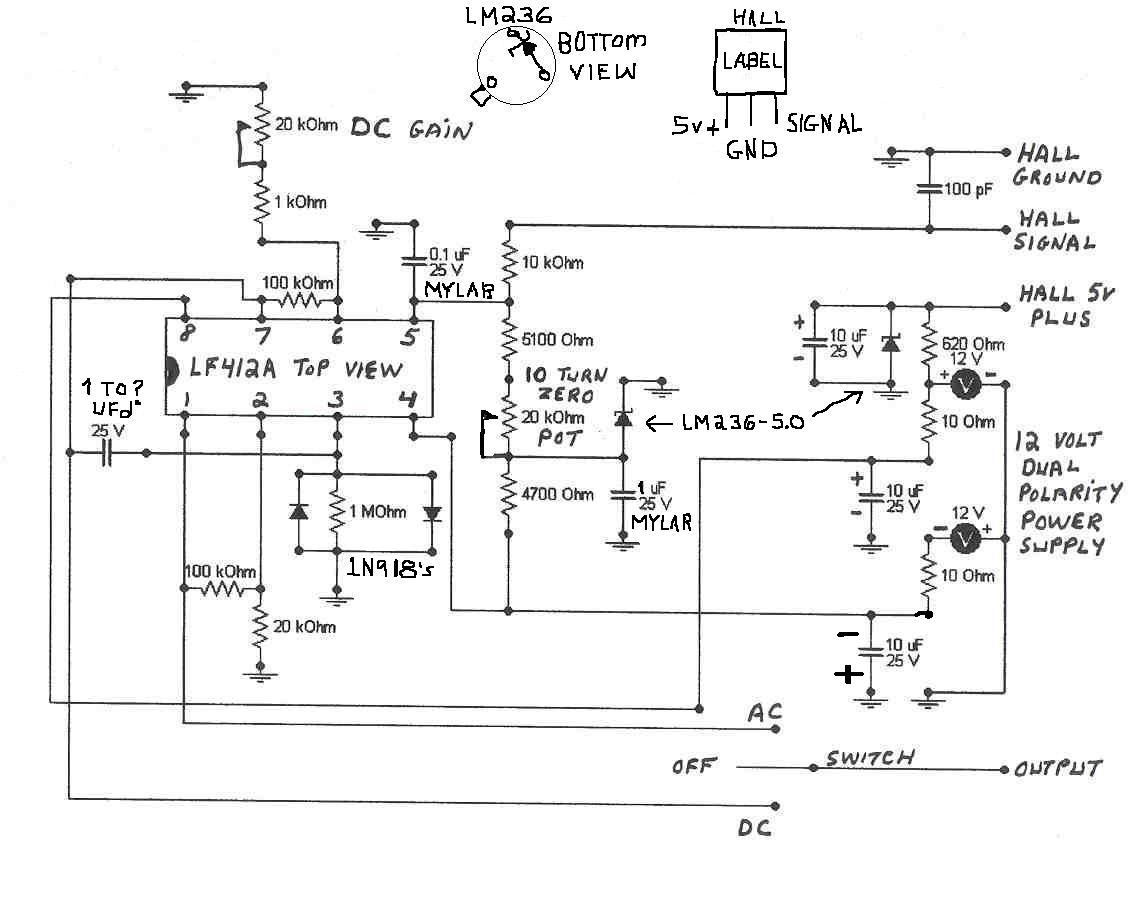Robert Lamb's Hall Circuit

Above is Robert Lamb's marvelous circuit. It
is a dependable, simple and highly effective means of amplification.
For most individuals with some electronics experience, (not counting myself-ha),
they can probably successfully construct it in a relatively short time,
and operate it, adjust the seismometer, with only a digital multi-meter
measuring instrument.
Some fast notes on the circuit above.
The T/A by the capacitors means either tantalum or electrolytic capacitors
could be used; but preferably tantalum. The diodes across the 1M
resistor (runs in both directions), can be general purpose; i.e., 1N918
etc. The linear Hall devices are the Allegro UGN3503 and the A3515
specifically. Both Hall devices will work with this circuit.
I have briefly used the UGN3503 with my older commercial Sprengnether horizontal
successfully, but am using the A3515 with the Shackleford-Gunderson type
seismometer shown in the photos elsewhere, because of its much greater
sensitivity (~X4), which is necessary for this seismometer.
The schematic above is a somewhat simplified layout
of the Hall circuit. Basically it shows the circuit in kind of a
reality mode, i.e., the amplifier is shown as it appears as one unit.
The 1 to ? ufd capacitor on the right is the "period" adjustment capacitor,
and can be replaced with various value film or mylar capacitors.
Do NOT use polarized or electrolytic capacitors here. (Polarized capactiors
usually hae a bar on one end or with plus and minus markings on the units.
I use 10ufd on my S-G's for the present, although I will eventually try
higher values.
There are three 10ufd/25v bypass capacitors in the
circuit. Probably any value from 10 too 47ufd would work. These
can be polarized tantalum, but electrolytic could probably be successfully
used. Suggest their working voltage be at least 25 volts or higher.
Watch the polarity markings of the capacitors per the circuit/s above,
or it will blow out.
The values elsewhere are still somewhat smudgey, but
they appear to be readable and somewhat better when printed out.
This pages last update is 10/23/98
BACK TO THE MAIN PAGE

